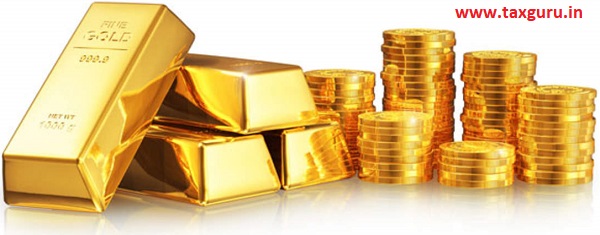We Indians are crazy on yellow metal. The rate of 10 grams of pure 24 Karat gold was sold at Rs.1,670 in the year 1981 and it is being sold now (2020) at Rs 46,790. We were able to see a 33% price hike between 2019 and 2020. In the history of last 40 years, it happens to be in 2006 and 2012 was the years in which the price hike was above 30%. On an average of 10% price ever year hike happened in the last 40 years (Detailed table given at the bottom).
Presently, the Fixed Deposits rates in India becoming low in such a way that it is not lucrative for investors. It has fallen to 5% p.a. Following the rule of 72, it takes almost 14.4 years to double the investment. Further, the interest income is subject to income-tax, which would be a trouble for the investor in their way to wealth creation. Further, considering the present situation of mounting NPAs pose threat to the investment in FDRs even though Government has guaranteed up to Rs.5 lakhs. People still feel unsafe to have fixed Deposits in Financial Institutions including Bank.
As per the ancient principle it is always safe to have investment in physical gold for which the marketable value also increases every day. But it is subject to certain threats like theft and depreciation on the gold due to usage etc etc. Today, you go and buy a gram of gold at shop and you will have to check as to whether it is a pure gold (22 Karat) or not. Most of us does not have the capability to check the same. Even, the gold sellers are relying on the machines (Karat Machine) to check the same as the said capability lost by human beings. There are some gold sellers they play well with innocent buyers especially in rural and semi-urban areas in which they used to sell very low-quality gold which does not have sufficient resale value. Traditionally, we Indians used to gift gold jewels to any family functions. Unfortunately, the gift receiver has to face the quality issue that the gifted gold does not has adequate resale value because of low quality. The worst thing is that the gift receiver could not ask or communicate the fate of the gold presented to them as it will affect the relationship.
Real Rate of Gold

If you buy a gram of 22 karat gold today, you have to pay Rs.4,427 and you have to pay additionally on an average of 12% to 18% on the value for making and wastage charges which works out to be Rs.796, adding to the value it works out to Rs.5,223. Further, you have to pay for the Government in the form of GST at the rate 3% which works out to Rs.157, adding this to the value which leads to Rs.5,380. Even though the market value is Rs.4,427 you need to pay Rs.5,380 to get a gram of gold. You are paying additionally Rs.953 per gram. This gold purchased is subject to the following issues and risks:
1. The gold quality cannot be verified by you consequently when you go for reselling you may get annoyed
2. The gold may get depreciated or damaged due to usage
3. You should be incredibly careful to store your gold jewelries
4. Always worried for the theft and burglary.
5. When you resell your gold, there will be a percentage of reduction in the weight for old gold.
Alternate Gold Investments India
Government of India has come out with a sovereign gold bond schemes from the year 2015. These schemes are developed and issued through scheduled commercial banks and other channels in a phased manner. Usually, it has a lock-in period of 8 years. The issuer government shall issue per gram of gold of 24 karat at present value and it will be redeemed at the present value of 24 karat at the time of 8th year’s market. In between on yearly basis interest on the nominal value at the rate between 2.5% to 2.75% is being given to the investor. This not available when you buy a gold in physical form.
As per the records available in the history of gold rates and based on the projection it can be said that the gold rate of 24 Karat (10 Grams) would be Rs.1,33,497 in 2030. Government of India is presently issuing the Sovereign Gold Bond 2020-21 in 6 tranches as follows: –
| S.No | Tranche | Date of Subscription | Date of Issuance |
| 1. | 2020-21 Series I | April 20-24, 2020 | April 28, 2020 |
| 2. | 2020-21 Series II | May 11-15, 2020 | May 19, 2020 |
| 3. | 2020-21 Series III | June 08-12, 2020 | June 16, 2020 |
| 4. | 2020-21 Series IV | July 06-10, 2020 | July 14, 2020 |
| 5. | 2020-21 Series V | August 03-07, 2020 | August 11, 2020 |
| 6. | 2020-21 Series VI | Aug.31-Sept.04, 2020 | September 08, 2020 |
Source : https://taxguru.in/rbi/sovereign-gold-bond-scheme-2020-21.html
The issue price decided is around Rs.4,677 per gram and a person can buy up to 4 kgs and there are other restrictions and permissions as directed by RBI which are available in https://taxguru.in/rbi/sovereign-gold-bond-scheme-2020-21.html .
Extra Costs to Investors
It would be prudent for the investor not to lose money in any form, very particularly, when you buy physical gold as said above you have to lose money per gram Rs. 953 in the name of making charges, wastages and GST. But if you buy the gold bonds issued by the government, you pay only for the gold and not for the making charges and GST. On top of it, every year you will be paid around 2.5% till end of the redemption of the Bond. Assuming that the bond will be for eight years, the total interest received would be 20% (8 years * 2.5% – All years together). Further, on the date of redemption of the bond, you will be paid market value of the gold held by you without any reduction or wastage.
Return Calculation
Today everybody takes cost benefit analysis, let’s calculate to know better. Let us assume, you have Rs.10 lakhs to buy gold and it is an investment plan and we analyze in the following two methods. One is to buy physical gold and another one is buying gold bond issued by Government.
| Particulars | 22 Karat | 24 Karat |
| Physical Gold | Gold Bond | |
| Rate/Gram | 4,427 | 4,627 |
| Wastage & Charges @ 18% | 797 | – |
| Sub-Total | 5,224 | 4,627 |
| GST @ 3% | 157 | – |
| Total Rate / Gram | 5,381 | 4,627 |
| Total Value of Investments | 10,00,000 | 10,00,000 |
| Total Grams Purchased | 185.85 | 216.12 |
| Expected Rate at 8th Year / Gram | 11,033 | 11,033 |
| Resale value @ 97% / Gram | 10,702 | – |
| Total Resale Value | 19,88,972 | 23,84,439 |
| Next 8 years Interest (2.5%/year) | – | 2,00,000 |
| Total Realisable Value (8th Year) | 19,88,972 | 25,84,439 |
| Your investment becomes in times | 1.99 | 2.58 |
| Income-tax Payable (30% slab) | 2,96,691 | 60,000 |
| Total available for Investors | 16,92,281 | 25,24,439 |
Upon redemption, you will be able buy new model jewels if required or you can reinvest in gold bond again.
Trade your Gold Bonds in Stock Exchanges
Gold bonds are easily tradable in stock market, upon dematerialization of the bond, if required you can sell the bond in regulated market like NSE and BSE.
Taxation issues in Gold:
When we sell our physical gold, the gain from the sale becomes capital gain and income-tax to be paid on it according to the rates applicable to the person. But in case of Gold bond, the capital gain on the redemption is not taxable but the interest given under the scheme is always taxable. Even in the taxation point of view it is always better to invest in Gold bond than buying physical gold.
Gold Rates (Standard 24 carats)
(up to the year 2020 actuals and rest of them are projected based on history)
| Year | Rates in Rs./10 gram | Per Gram | % tage | Year | Rates in Rs./10 gram | Per Gram | % tage |
| 31.03.2005 | 6,180 | 618 | 102% | 31.03.2030 | 1,21,361 | 12,136 | 110% |
| 31.03.2004 | 6,065 | 607 | 114% | 31.03.2029 | 1,10,328 | 11,033 | 110% |
| 31.03.2003 | 5,310 | 531 | 106% | 31.03.2028 | 1,00,299 | 10,030 | 110% |
| 31.03.2002 | 5,010 | 501 | 120% | 31.03.2027 | 91,180 | 9,118 | 110% |
| 31.03.2001 | 4,190 | 419 | 96% | 31.03.2026 | 82,891 | 8,289 | 110% |
| 31.03.2000 | 4,380 | 438 | 103% | 31.03.2025 | 75,356 | 7,536 | 110% |
| 31.03.1999 | 4,235 | 424 | 105% | 31.03.2024 | 68,505 | 6,851 | 110% |
| 31.03.1998 | 4,045 | 405 | 86% | 31.03.2023 | 62,277 | 6,228 | 110% |
| 31.03.1997 | 4,725 | 473 | 92% | 31.03.2022 | 56,616 | 5,662 | 110% |
| 31.03.1996 | 5,160 | 516 | 110% | 31.03.2021 | 51,469 | 5,147 | 110% |
| 31.03.1995 | 4,680 | 468 | 102% | 31.03.2020 | 46,790 | 4,679 | 133% |
| 31.03.1994 | 4,598 | 460 | 111% | 31.03.2019 | 35,220 | 3,522 | 112% |
| 31.03.1993 | 4,140 | 414 | 96% | 31.03.2018 | 31,438 | 3,144 | 106% |
| 31.03.1992 | 4,334 | 433 | 125% | 31.03.2017 | 29,668 | 2,967 | 105% |
| 31.03.1991 | 3,466 | 347 | 108% | 31.03.2016 | 28,340 | 2,834 | 108% |
| 31.03.1990 | 3,200 | 320 | 102% | 31.03.2015 | 26,245 | 2,625 | 92% |
| 31.03.1989 | 3,140 | 314 | 100% | 31.03.2014 | 28,470 | 2,847 | 96% |
| 31.03.1988 | 3,130 | 313 | 122% | 31.03.2013 | 29,610 | 2,961 | 106% |
| 31.03.1987 | 2,570 | 257 | 120% | 31.03.2012 | 28,040 | 2,804 | 135% |
| 31.03.1986 | 2,140 | 214 | 100% | 31.03.2011 | 20,775 | 2,078 | 127% |
| 31.03.1985 | 2,130 | 213 | 108% | 31.03.2010 | 16,320 | 1,632 | 108% |
| 31.03.1984 | 1,975 | 198 | 110% | 31.03.2009 | 15,105 | 1,511 | 125% |
| 31.03.1983 | 1,800 | 180 | 106% | 31.03.2008 | 12,125 | 1,213 | 129% |
| 31.03.1982 | 1,700 | 170 | 102% | 31.03.2007 | 9,395 | 940 | 111% |
| 31.03.1981 | 1,670 | 167 | 31.03.2006 | 8,490 | 849 | 137% |
This article is to create investment awareness among the investors and general public and it cannot be taken as professional advice and accordingly the publisher or the author is not responsible for any consequences taking decision upon this material. Before investing, it is always better to discuss your auditors or advisors in whom you are relying most.
The author is a Chennai based Chartered Accountant he can be reached at caselvaa@gmail.com






Read. Thanks.